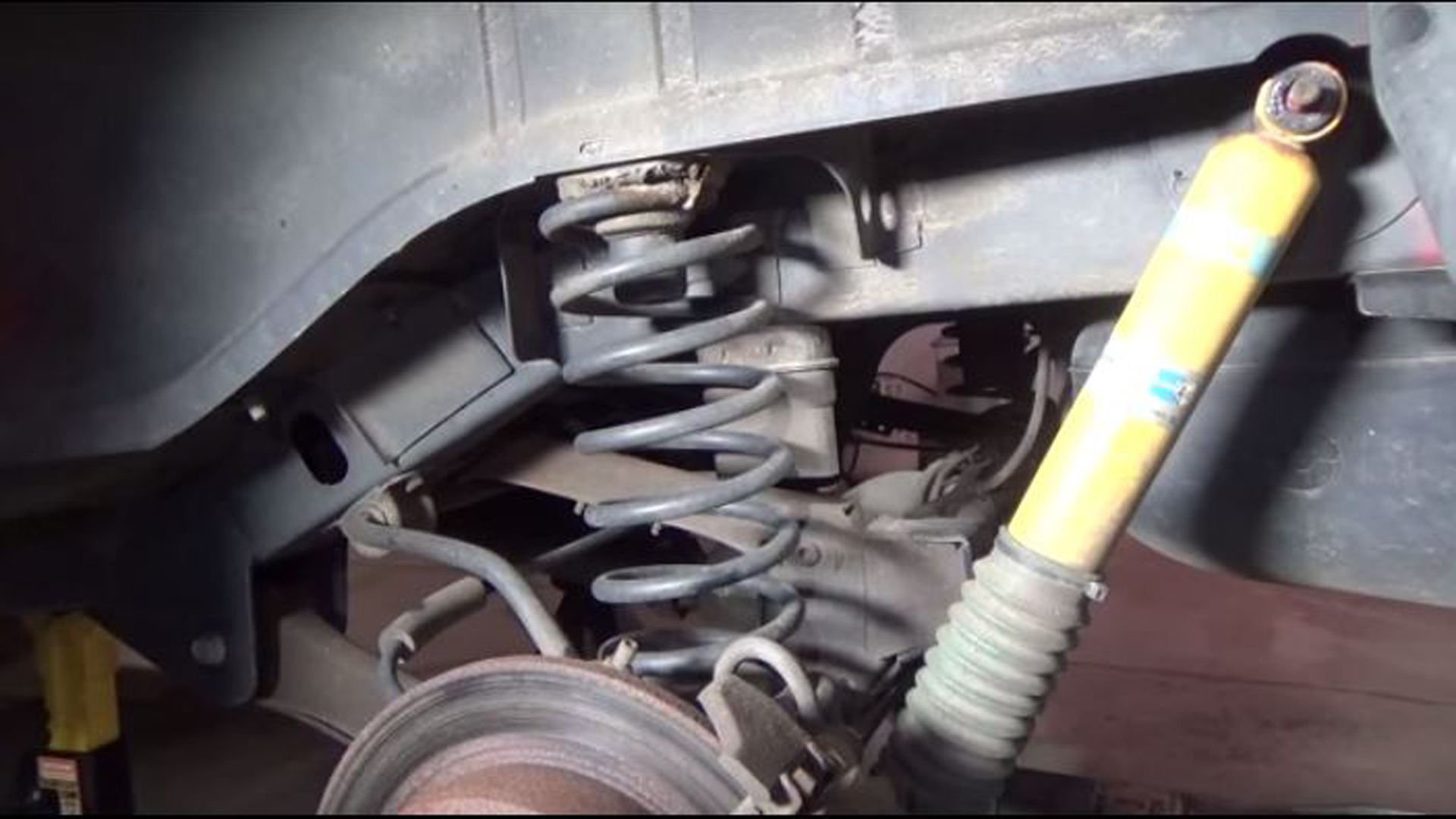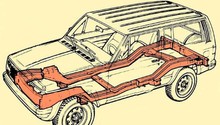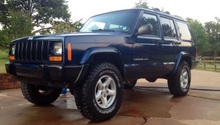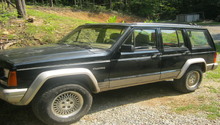Jeep Cherokee 1984-2001: Suspension Noise Diagnostic Guide
Is the suspension on your Jeep making some sort of annoying noise? This article will help you diagnose and correct the problem to make your commute more peaceful.
This article applies to the Jeep Cherokee XJ (1984-2001).
A noisy suspension isn't just extremely annoying, it can also be an indication that something is wearing out or already worn out. It might also be paired with a change in the way your truck handles or steers, and could eventually lead to a part failure that can be very dangerous. The most difficult part of fixing a noisy suspension is simply locating the source of the problem, which can take a little time. But once you find the culprit, swapping out worn parts for new parts is generally very straightforward. Keep reading and we'll run down all the things that can make your suspension noisy.

Materials Needed
- Floor jack
- Jack stands
Step 1 – Check wheel bearings
Bad wheel bearings can make a variety of noises.
The noises emitted by a bad wheel bearing can vary from a constant chirp, squeak, moan, or hum. The sound will change based on the speed you are driving, as well as when you are turning versus driving straight. When turning, you might hear a snap, click, grinding noise, or pop. Other symptoms include a pull to one side while driving, uneven tire wear, and a loose or shaky feeling while driving.
To check your front wheel bearings, lift the car up and place it on jack stands so that the front suspension is hanging freely. Firmly grasp each wheel at the 12 o'clock as well as 6 o'clock position and shake it. If there is any movement, the bearing needs to be replaced.

If your bearings are in good shape, move on to Step 2.
Step 2 – Check shocks/struts
Worn shocks and struts will make a lot of noise.
Some symptoms of worn shocks or struts include excessive bouncing when you drive over bumps or uneven surfaces, nose diving or squatting when braking or accelerating, tire cupping or scalloping, or leaking fluids. You will also most likely hear squeaky noises while driving over bumps or uneven road surfaces, or when turning corners. To check your shocks and struts, push down on the car directly above each wheel and tire. The car should rise back up but not bounce. If it is bouncing, it's time to replace your shocks and struts.

If your shocks are in good shape, move on to Step 3.
Step 3 – Check bushings
Once worn, bushings no longer cushion your suspension from bumps and dips.
Bad suspension bushings can cause squeals, clunks, and squeaks as well as heavy clunks while turning the steering wheel in either direction. You might also notice that the car pulls or drifts to one side of the road while driving, or see some uneven tire wear. Crawl under the car to inspect the bushings for the shocks, struts, anti sway bar, upper and lower control arms. Check to see if the bushings are cracked, deformed, or flat looking. Replace any bushings that are worn, cracked, loose, or flattened.

If your bushings are in good shape, move on to Step 4.
Step 4 – Check ball joints
Worn ball joints can make a variety of noises.
Ball joints can cause your steering to feel vague or wandering, making the car pull to one side or the other, and feel loose or darty. You will also likely hear loud banging or popping noises, or a slight tap when turning the wheel. These noises can vary in speed or loudness depending on which ball joints are damaged. You will also notice uneven tire wear.
To check your ball joints, lift the vehicle off the ground and place it on jack stands so that the front wheels are hanging freely. Grab each tire, one at a time, from the top and the bottom to try to push/pull it in and out. Also, grab the tire from each side and try to rock it. If the tire rocks and/or makes noises while doing so, you likely have a bad ball joint.

Related Discussions
- Knocking Noise From Front End While Turning - CherokeeForum.com
- Suspension Noise - CherokeeForum.com
- Front Suspension Help - CherokeeForum.com






